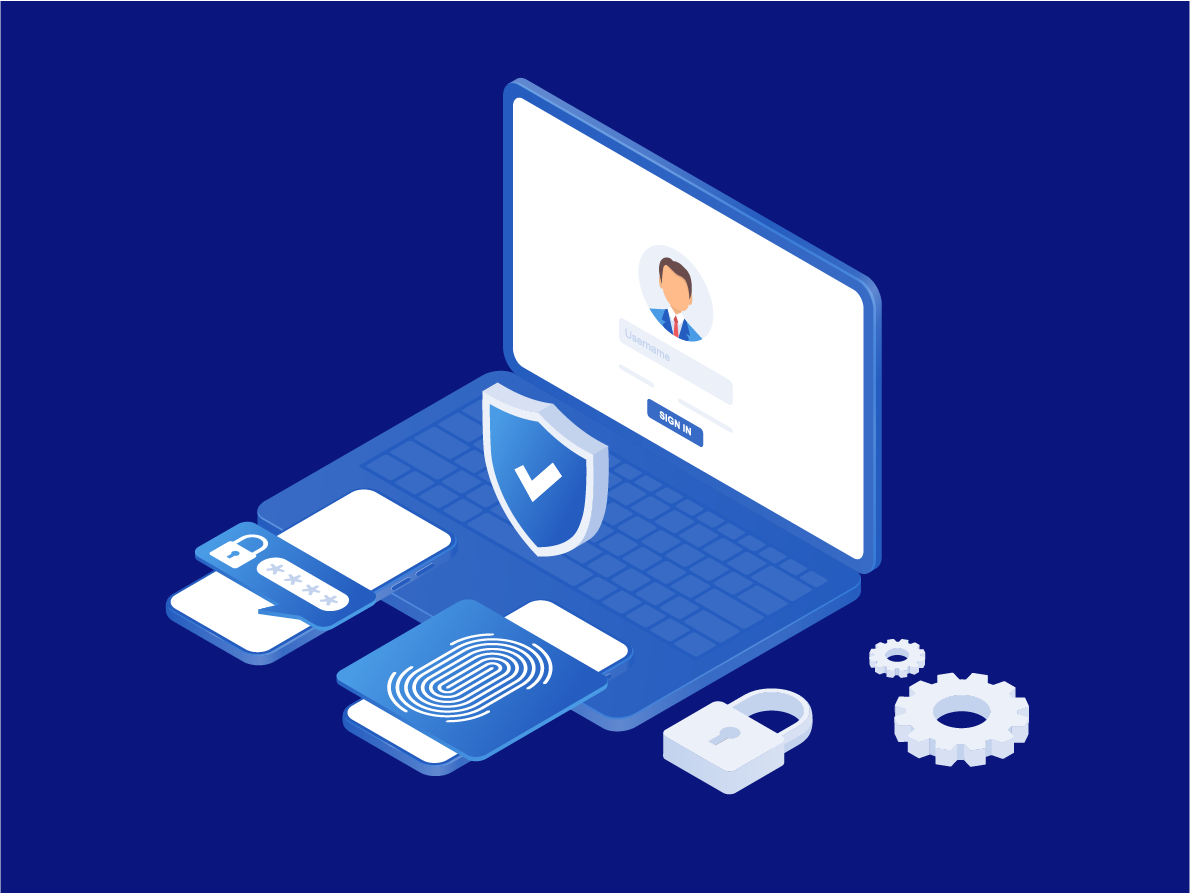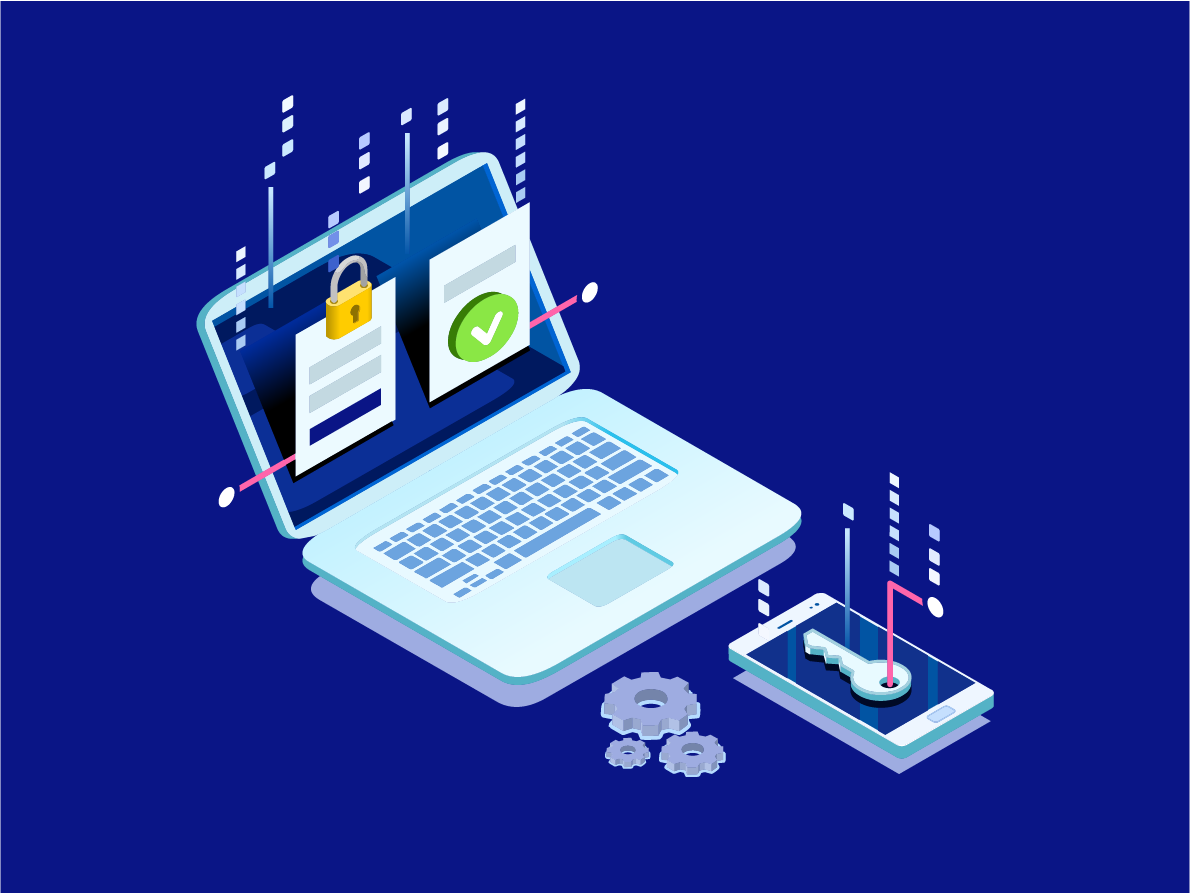
Get started with LoginID’s passwordless authentication solution for free HERE.
Advancing technological capabilities is expanding consumer expectations when it comes to financial services. Many new customers prefer to open new checking or savings accounts without physically going to the bank. People also realize the benefits of transferring money from one of their accounts to another by using their mobile devices.
As consumers become more technologically inclined, online and mobile banking features become essential. Digital facilities are now a significant consideration for many when choosing a service provider.
The shift to a consumer-centric approach has banks undertaking large-scale digital transformations to accommodate these new industry demands. Providing modern monetary capabilities is now a major objective for financial service companies to adapt to changing consumer behavior and maintaining competitive advantage.
Digital Onboarding Process
Digital onboarding is a critical part of delivering online financial needs to the market. It is the process of enrolling the customer in the company’s system and performing Know Your Customer (KYC) and Anti Money Laundering (AML) checks. Once a customer has an account, they gain access to the bank’s products, services, and facilities.
Digital onboarding has a similar goal to the traditional process – it gathers vital information on the customer and executes identity checks to comply with KYC regulations. It helps uncover credit history and checks for sanctions to protect the company and consumers. Only when the financial institution has all the necessary documentation can it begin doing business with the client.
Additionally, digital onboarding helps companies deliver better utility. Automation speeds up the application process, making the services available to customers almost immediately once approved. The availability of client details also allows banks to personalize facility recommendations and enhance the user experience.
Digital onboarding generally involves the following stages:
- Data Collection
Electronic Know Your Customer (eKYC) involves collecting applicants’ personal and transactional data. Often, applicants fill out digital forms and answer questions to discern their spending habits, investment goals, and preferences. Afterward, they upload a picture of their ID and other documents.
Data collection allows organizations to group their customers into risk groups and better understand the needs and the context in which they use services. These pieces of information help companies bring value by targeting products like insurance policies and loans at competitive rates.
- Identity Verification
Companies need to verify that the customer’s information is accurate and the submitted documents are legitimate. They cross-check the identification document with trusted sources to check whether it is registered. Through a selfie or a quick video call, the company confirms that the applicant is who they claim to be.
eKYC authentication during onboarding lowers the risk of financial fraud, identity theft, the financing of criminal organizations, and money laundering. It effectively substantiates that the prospective clients are trustworthy.
- Disclosures and Consent
Customers need to confirm that they understand the responsibilities of the service provider. For example, the company has the legal duty to protect personal and banking information, but they also would be compelled to disclose details on specific situations. The applicant provides acceptance for these terms by ticking a checkbox or providing a biometric digital signature.
Moreover, digital onboarding entails more than carrying out the traditional procedures in a remote setup. It also involves providing convenience, security, and a positive user experience.
For example, requiring customers to input personal information and then upload a photo of their ID takes time and can result in redundancy. Modern solutions, like AuthID, can already capture client information from an ID card, passport, or visa. Employing tools like this improves the user experience by merging multiple steps into one and reducing manual input.
Another issue with some digital onboarding procedures is that they still take at least a day to authenticate identities and documents. Part of the issue in this procedure is the organization’s lack of technology to conduct a reliable online identity verification. These companies could improve their services by offering a biometric digital identity verification solution to upgrade their eKYC implementation.
The Importance of Biometric Identity Verification in Digital Onboarding
Banks endeavor to protect the integrity of their service. Because digital onboarding works over the internet, it is more challenging to establish trust between parties. Especially now that digital fraud and identity crimes are more prevalent, financial companies need a more robust method to ascertain the genuineness of new customers’ identities.
Biometric authentication gives companies confidence in providing services to their clients. Because fingerprint and facial features are unique, they are an accurate identity verification method. They are also almost impossible to cheat.
Companies can then reinforce biometric identity verification with liveness detection to prevent spoofing attacks. For instance, a fraudster can use artificial intelligence (AI) to simulate a person’s facial features from a photo or video to steal another’s identity. Liveness detection can reveal whether the proof of identity is real or fake.
Digital Onboarding and Biometric Authentication Solution for Financial Services with Liveness Detection
Banks and other financial institutions face new challenges with the accelerating industry digitalization. If they succeed in meeting them, they can reach more markets and increase their chances of growing their revenue.
LoginID through their partnership with AuthID offer digital identity verification solutions to help financial service providers build a regulatory-compliant and reliable onboarding with their digital platforms. With LoginID and AuthID, the company initiates eKYC procedures like digital identity verification and document scanning quickly, seamlessly, and securely.
This banking and finance solution can validate government-issued IDs and documents through an automated system that cross-matches the captured data with reliable sources. The solution executes a facial liveness check using the device’s camera to confirm that the person registering is present and the same as the one represented in the captured documents. Finally, a biometric mobile identity verification is conducted to corroborate their identities so that users can enable biometric sign-in and transaction confirmation for future activities.
LoginID employs FIDO2 biometric authentication to continue to verify user’s identities after the onboarding process. FIDO2 protocols offer strong customer authentication mechanisms to protect personal data. The solution works for web and mobile users, offering flexibility and convenience. LoginID’s simple yet strong customer authentication capabilities can give online banking services a significant advantage over their competitors.
Authenticated Payments
Once a client has been digitally onboarded by a financial institution, they are going to use their accounts to transact. But how can banks and financial institutions ensure that the account owner is in fact the person making a transaction and not a fraudster who is transfering the money to their own account?
Fortunately, LoginID has a solution to this problem. Banks, financial institutions, eCommerce providers, and crypto exchanges and digital wallets could all benefit from adding payment authentication to transfers and transactions. With payment authentication the customer is prompted to provide a biometric digital signature for transactions, thus ensuring the transactor is in fact who they say they are.
Get started by getting in touch with our experts today at sales@loginid.io. Or you may also register an account to get immediate access to LoginID’s authentication solution. You can also check out our documentation or try our solution out through our easy-to-use tutorial.
References: https://www.altamirasoftworks.com/blog/development/digital-onboarding-how-to-get-and-keep-clients/https://www.pwc.at/en/next-generation-client-onboarding.htmlhttps://www.finextra.com/blogposting/18648/now-biometrics-will-be-essential-for-digital-onboarding-and-authentication


